Low Back Flexion Exercise ( William’s Flexion Exercise)
Low Back Flexion Exercise also Called William’s Abdominal Exercise is Help to improve the Strength Of the Flexor Group Of Muscles of the lumbar spine And overall Mobility of the lumbar spine mainly through Flexion movement.
This Exercise helps improve the strength of the abdominal and gluteal musculature in an effort to manage low back pain non-surgically. The system was first devised in 1937 by Dr. Paul C. Williams (1900-1978), then a Dallas orthopedic surgeon.
Low Back flexion exercises are also called Williams lumbar flexion exercises, Lumbar flexion exercises, or simply Williams exercises or Abdominal Strengthening Exercises.
It is the Best exercise to perform since it places minimal strain on your back and can be done while lying down. Low Back flexion has been shown to be an effective exercise for spinal Canal stenosis, Lumbar spondylolisthesis, lumbar facet joint problems, and Lordosis.
Low Back flexion exercises improve the lumbar spine flexion position to reduce excessive lumbar lordotic postures. Flexion Exercises are useful for strengthening the abdominal, gluteal, and quadriceps muscles, and stretching the opposite group of muscles like erector spinae, hamstring, tensor fasciae latae muscles, and the iliofemoral ligament.
Which aims are achieved with the Help of Low Back Flexion Exercise?
The following aims are achieved with the Help of the Back Flexion Exercise :
- Strengthen the Weak Abdominal Muscle. This will Help the Overall stamina of the Back.
- Open the intervertebral foramina
- Stretch the back extensor and Hip Flexor muscle and Facets.
- Also Helps in the Correction of Pelvic Tilt by strengthening gluteal muscles.
- Improve overall mobility of the lumbosacral junctions.
A few Best Lists of Low Back Flexion Exercises are as per below :
- Partial Sit-up From Supine Position
- Knee-To Chest Exercise
- Bridging – Pelvic Tilt Exercise
- Hamstring Muscle Stretching Exercise
- Lunges
- Seated trunk flexion
- Full Squat
- Straight Leg Raising
Here we discuss a few Simple and Easy To Do Home Exercises.
Partial to Gradually Full Sit-Up Exercise :
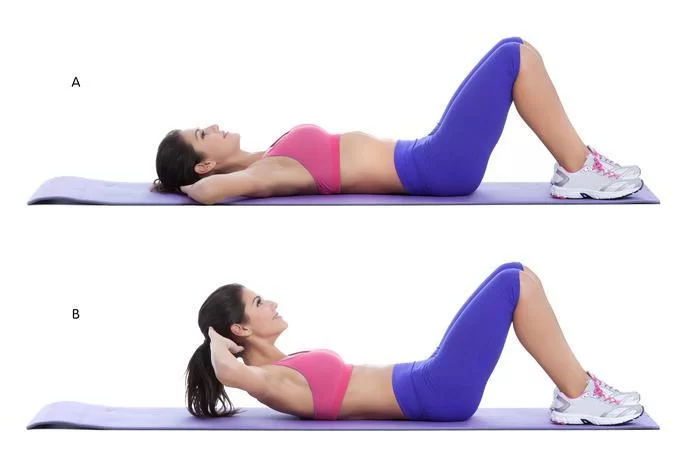
The patient lies in a supine with knees bent and feet flat Position (hooklying), With hands behind his or her head, then patient elevates the Head and Shoulder until the scapulae clear the resting surface and stress is placed on the rectus abdominus muscles. After returning to the start position, the sit-up is repeated for a prescribed number of repetitions.
The first 3 Days start with 5 to 7 repetitions and then gradually increase the repetitions and also Hold the Positions. Exercise must be pain-free. As strength improves full sit-ups also allow you to perform.
Knee-to-chest Exercises :
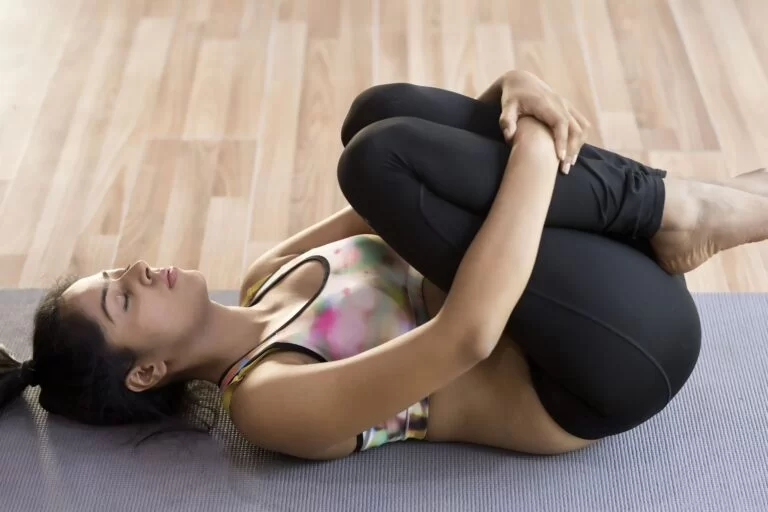
Single Leg Knee to Chest: Lie on your back with knees bent and feet flat on the floor. Slowly pull your right knee toward your shoulder and hold for 5 to 10 seconds. Lower the knee and repeat with the other knee.
Double Legs knee to chest: Starts as in the previous exercise. After pulling the right knee to the chest, pull the left knee to the chest and hold both knees for 5 to 10 seconds. Slowly lower one leg at a time.
Bridging Exercise :
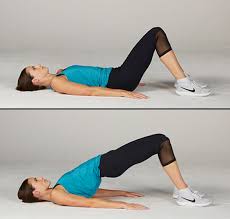
Supine Lie position on your back on a mat with your knees bent, Elevates your hips off the floor until your hips are aligned with your knees and shoulders. Hold for 5 to 7 seconds. Return to the start position and repeat. First Day 7 to 8 repetitions and 2nd day 8 to 10 repetitions and gradually increase repetitions as per stamina.
This exercise helps to improve the strength of the Glutes muscle with other muscles are hamstrings, lower back muscles, and abdominal’s.
This exercise is also important for improving the strength of the Core muscles of the Back. With many of the benefits similar to that of a squat, another plus for the glute bridge is that it does not place any pressure on the lower back. This is also an important exercise for people who are unable to squat due to back, hip, or knee pain.
Hamstring Muscle Stretching Exercises :
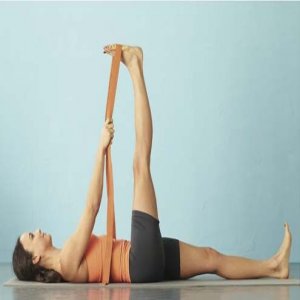
Supine Lie down on the ground on a mat Keep your back flat and your legs extended fully position.
Elevate your right leg, keeping the knee slightly bent, and gradually extending from the knee until you feel a stretch in your hamstring.
Hold this position for 5 seconds and gradually as progresses increase up to 30 seconds. 5 to 7 repetitions on the first Day are recommended and gradually increase the repetition.
Williams noted that flexible Hamstring muscles are important to accomplish full flexion of the lumbar spine. Although tight hamstrings limit lumbar flexion movement in standing with the knee straight, we now know that tight hamstrings actually tilt the pelvis posteriorly and promote trunk flexion.
Lunges :

In Standing Position Step forward with one foot until your leg reaches a 90-degree angle Then Lift your front lunging leg to return to the starting position.
Repeat 7 to 8 repetitions on one leg or switch off between legs and Gradually increase the repetitions per leg. 2nd Day 8 to 10 repetitions and 3rd Day 10 to 12 repetitions and Gradually increase more repetitions as per the stamina of the Body.
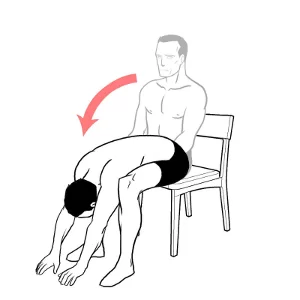
This exercise is a good stretching exercise for the entire lower extremity, especially the iliopsoas muscle, which may be a perpetrator of low back pain if it is abnormally tight or in spasm.
Seated trunk flexion :
This exercise is performed in a sitting position in a chair and flexing forward in a slumped position.
This exercise is helpful in improving Maximum trunk flexion and direct stretching of the Back extensonr’s stretching and Mobilization of the spine is improved.
Full Squat :
In Full squat your feet, which are typically shoulder-width apart and flat on the floor and your toes are either straight ahead or at a small, 7-degree toe-out position, your knees are straight, and your trunk is erect, starts by squatting down as if you’re sitting into a chair. Your ankles, knees, and hips will bend in unison while your spine stays straight.
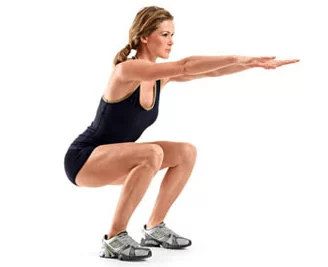
As you start to lower, your knees will travel forward over your toes, and your hips will travel backward to keep your center of gravity over your feet.
Your trunk and pelvis will stay neutral position and straight as you bend at your hips. At the lowest depth, your pelvis will be in relative alignment with your shins. Ideally, your pelvis will remain in a neutral position, without tilting forward or backward.
Try to keep Your knees will stay in alignment with your feet when viewed from the front.
The full squat improves significant mobility in several joints — namely your hips, knees, ankles, and even your lumbar spine and also improves the strength of related muscles mainly quadriceps, Glutei and calf muscles, and also related spinal muscles.
The full squat improves significant mobility in several joints — namely your hips, knees, ankles, and even your lumbar spine and also improves the strength of related muscles mainly the quadriceps, Glutei, and calf muscles and also related spinal muscles.
Low Back Flexion Exercise video :
Conclusion :
Low Back flexion exercises are specifically used in low back pain-related conditions like Spinal canal Stenosis, Lumbar Spondylolisthesis, Lumbar Spondylosis, Lumbar lordosis, and facetal locking where spinal extension is painful.


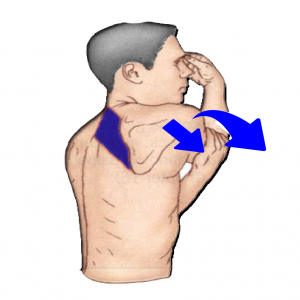
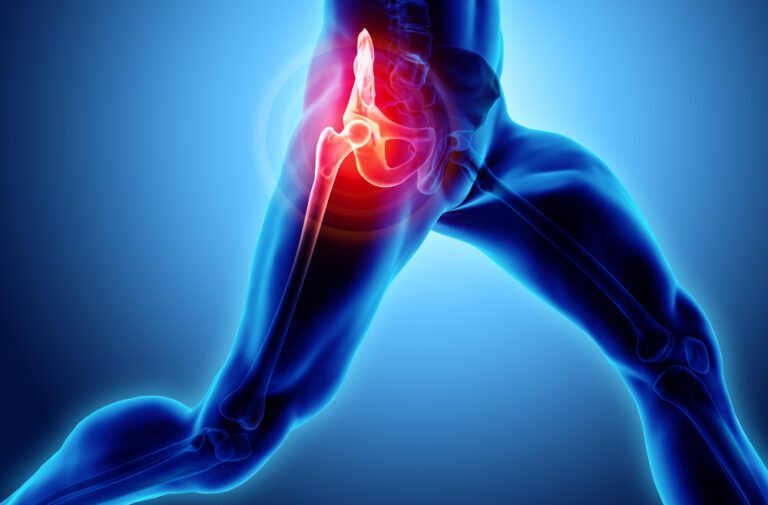
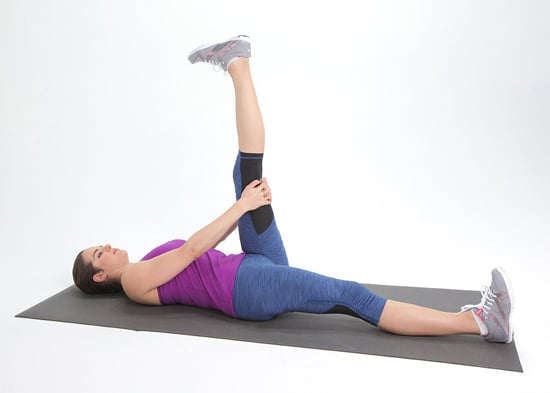
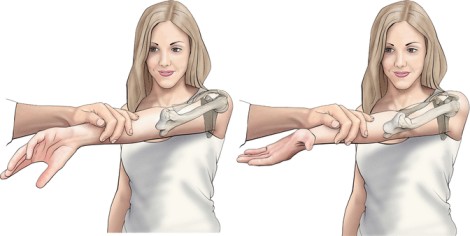


3 Comments